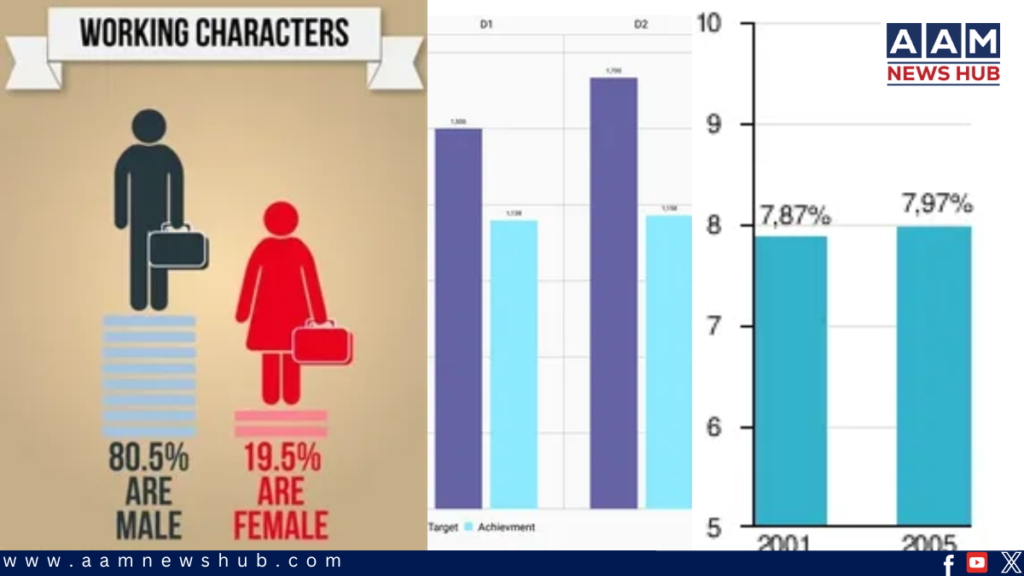Analyse of Income Inequality in Pakistan between Men & Women in Different Sectors

Men account for 51 percent of Pakistan’s population, women for 48.76percent, and transgender persons
for 0.24 percent. Pakistan has a both men and women gender ratio of 105.07, or 105 males for every
100 women.
The rankings are based on schooling, medical care, financial potential, and participation in politics. It
addresses a wide variety of socioeconomic issues, such as low levels of education, a high percentage
of students who leave school, as well as the widespread opposition to educating women
According to the World Economic Forum’s Global Gender Gap Index the year 2023, Pakistan falls into
the category of the world’s weakest countries for gender parity, rating 142 out of 146.
Regardless of being one of the lowest worldwide in terms of equal representation of women and men,
Pakistan ranks 71 out of a total of 146 nations for salary equality for same job. This is basically the
country’s highest score on any gender equality a unit of measurement.
According to the Labour Force Survey 2020-21, women’s labour force participation is 15.5%. In rural
regions, the rate is about 19.9 percent, while in urban areas, it is significantly lesser at 7.5 percent. This
might be identified mostly to increased engagement in agribusiness in rural regions, which affects labor
force involvement high.
A report to the survey showed that women earn 82 percent of what men earn. In simple terms, every
single Rs100 that a male gets, a woman receives Rs82 performing the same job. They’re big averages
and looking further into the figures reveals much more difference.
Approximately five percent of women on the job market work in agriculture or related fields, receiving a
median monthly pay of Rs9,419. Similarly, one-fourth are engaged in the industrial sector, earning
around Rs14,238 monthly.
Furthermore, about one-third of all women work in education, with a standard monthly salary of
Rs29,131. On the other hand, the salary difference is the smallest at 89 percent if a woman works as a
“manager,” which means that for each Rs100 received by a male manager, a woman receives Rs89.
Likewise, the disparity is 85 percent for customer service and marketing activities.
while on the overall level (in a city-based context) the wage difference narrows to 91 percent as
women’s significantly participation in agriculture reduces, allowing them to transfer higher-paying jobs.
In the time frame of 2017-18 and 2021-22, the salary gap shrunk significantly, climbing from 60 percent
to 82 percent. Without more detailed information, it is impossible to determine what caused such a shift
in the pay inequalities, and additional analysis is needed to confirm the improvement.
Earnings for both genders still have a lot of space to improve, since income continues feeling down due
to the economy’s slow actual development rate. However, for women’s average incomes to rise




